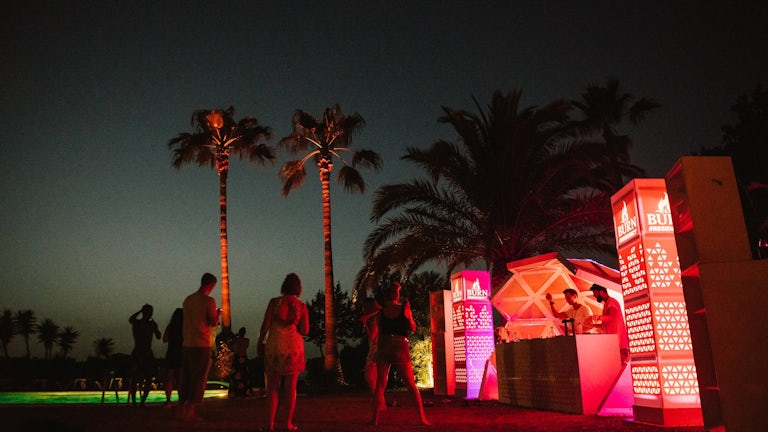Shopping Bag (0)
Your shopping bag is empty

...But it can deliver highly engaged audiences. A view from our Head of Broadcast, Adam Heyhurst..
With what should have been Glastonbury’s 50th nearly upon us, thoughts are turning to nostalgic memories of warm cider and bone-shaking bass. The Herculean trudge through knee-deep mud and the 5am euphoria of mac and cheese. The dust, the crowds, the kaleidoscope of smells, beating sun and pouring rain. So can we deliver the full sensory overload of a festival live to a west London flat on an eight-inch iPad?
No, actually. We really can’t.
Glastonbury tickets sell out before a single act is announced, so it’s not just about the music. And broadcasts simply can’t recreate the full in-real-life experience. So while we grapple with the inevitable pivot towards virtual events, it’s critical to tailor live streams to armchair viewers rather than dejected attendees.
As a founding producer in the "visualisation team" at BBC Radio, in 2011 it fell to us to amplify radio networks with Glastonbury video content. There was a desire to run independently editorialised live streams. This was a challenge. What on Earth do you point a camera at when you can already watch performances on TV and iPlayer and hear them on the radio? Instead of replicating the real-world experience, how would we match it with a synchronous offer tailored to people watching at home?
In year one, we "followed" the radio, providing a lens no-one had watched through before. Presenters roamed the sprawling 1,100-acre site while on air. Dripping in accreditation, able to go anywhere, cameras simply followed presenters around, from the Eavis’ kitchen to the depths of the Unfairground. This was content you couldn’t see if you had a ticket.
Later, we introduced the BBC Music Tepee: an acoustic tent behind the Pyramid Stage, sharing the magical appeal of the Live Lounge format – the only place to find a shoeless Christine and the Queens, Gregory Porter or The 1975 covering their Glastonbury idol. It’s this point of difference and exclusivity that made people want to watch and share. No surprise Dua Lipa’s Live Lounge has 93 million views against her Reading set with 12 million.
We also pushed into the festival’s lesser-covered areas, offering live streams of 1Xtra’s Party at the Blues Stage and Radio 1’s Essential Mix from The Hell Stage. On traditional platforms, reach for genre-specific content tends to perform modestly against mainstream music. This is partly due to its scheduling, but nevertheless, exponentially fewer people tune in to a dance show than breakfast. But Shangri-La’s specialist dance content bucked the trend. This was further reinforced with the first live stream of Radio 1’s Ibiza Weekend. Live streaming to underserved audiences was a huge reach and engagement driver, presumably because audiences couldn’t get it anywhere else.
To fill this year’s Glastonbury void, Shangri-La’s virtual-reality presentation of Lost Horizon (pictured, top) stands to be the most immersive festival experience we’ve seen… for those with the right VR kit. The vast majority, however, will still be watching in a 16:9 box. It’s the content, not the gadgets, that will make them stay, watch and share.
In time, people will return to the fields. But, until then, the pressure’s on to generate appointment-to-view live streams. And arbitrarily pointing a camera at something designed for physical attendance will cut through the contemporary cacophony as effectively as popping outside and shouting about it. So put yourself in the shoes of your audience and ask: why on Earth should they watch?